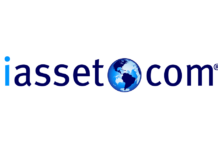The technology lag that once existed between India and other key technology markets is closing, according to Gartner, Inc. The “Gartner Hype Cycle for ICT in India, 2015” shows that more local vendors are entering emerging technology segments in India, covering areas such as crodsourcing, disaster recovery as a service and the internet of Things (IoT).
“Many of the technologies on the 2015 Hype Cycle for ICT in India also appear in the global ICT Hype Cycle,” said Santhosh Rao, principal research analyst at Gartner. “When we compared the technology entries for India with the rest of the world, we noticed that the overall technology lag – that is, global traction versus India traction – is gradually closing. India has evolved from an IT environment that was about 18 months to two years behind global trends at the start of the decade, to one where most trends in India are in sync with global trends.”
The Hype Cycle for ICT in India, 2015 identifies 26 key technologies that are most relevant for information technology in India, their maturity and traction, and positions them on the Gartner Hype Cycle. Technology vendors, service providers, stakeholders in IT, and business and government organizations can use this information to determine the maturity of each technology, as well as when each technology is expected to reach mainstream.
Figure 1 – Hype Cycle for ICT in India, 2015
Source: Gartner (July 2015)
Perched at the peak of this year’s Peak of Inflated Expectations, the IoT is top of mind for many Indian enterprises. Gartner believes that the IoT can benefit Indian enterprises in multiple ways, but for successful IoT implementation, Indian organizations will first have to understand the business use case for which they want to use IoT for. Success will also depend on aligning the IT and operation technology (OT) resources, processes and people carefully. Therefore, experimenting with pilot projects to understand the implications on people, process, technology and the business is an essential first step for Indian organizations.
Behind the IoT on the hype cycle, at the Innovation Trigger is, bimodal IT. It is a paradigm shift in how IT approaches its role within the enterprise. With technology becoming a more critical element of supporting business growth in a digital business era, it is imperative that IT adopt an approach that allows it to support the needs of the business at the pace of business change, which Gartner identifies as Mode 2. However, IT also needs to continue providing the traditional and foundational requirements that it has always supported, which Gartner lists as Mode 1. Supporting both of these vastly divergent activities is the fundamental premise of bimodal IT, and, done correctly, it can be a strong competitive differentiator for the enterprise.
“The Indian economy has recently shown signs of resurgence, with increased efforts by the government toward ease of doing business, which has triggered a significant increase in foreign direct investment (FDI),” said Mr. Rao. “With 5.5 percent growth in overall IT revenue projected for 2015, India is set to be the fastest-growing IT market worldwide.”












